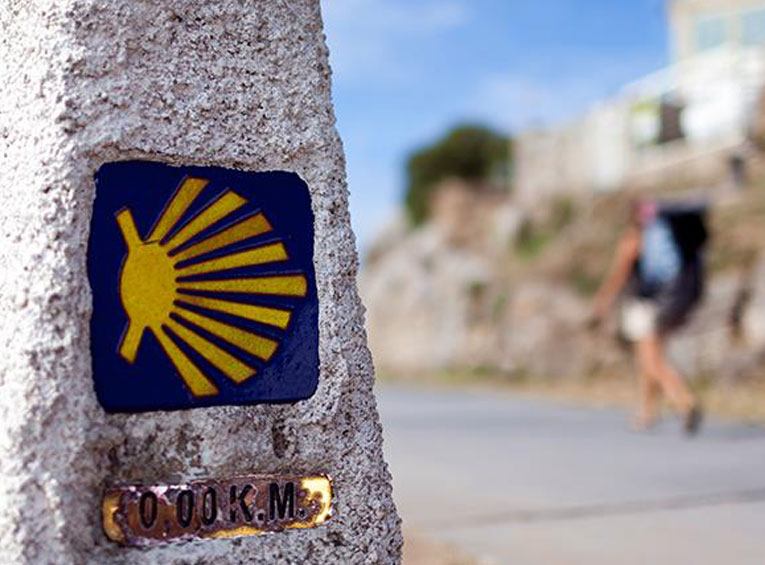Many of us show support by doing a charity walk or running a 5K – events that usually take the better part of a morning. But is there a cause that you would walk three days for?
For 50 people who will gather in Spain this week, the answer is yes and the cause is the rare disease hereditary angioedema. The group, including a guide, will walk 47 kilometers (about 29 miles) of the Camino de Santiago de Compostela in Spain, part of a thousand-year-old route for Christian pilgrims.
“The Camino Walk is a way to raise awareness and also a way for HAE patients and others to prove that they can overcome their difficulties and experience an event like this one,” said Sarah L. Smith, whose husband and three children have HAE.
HAE, a potentially fatal genetic disease, causes sudden and painful attacks of swelling. People who live with the disease often wait a long time for an accurate diagnosis and its unpredictability can disrupt everyday life.
Smith was one of the people who came up with the idea and initiated the first walk in 2016. She serves as president of Spain’s advocacy organization for HAE and is on the board of HAE International, which is organizing the 2019 walk. She’ll be trekking this year along with people from eight countries, including Chile, Denmark, Hungary, Italy, Norway, South Africa, Spain and the United States. Their walk begins on HAE Day (May 16).
The full Camino is a network of routes to Compostela, which thread into northwest Spain from several parts of Europe and cover more than 1,500 kilometers (900+ miles) in Spain. It was named a World Heritage Site by the United Nations Educational, Scientific and Cultural Organization (UNESCO)because the routes enabled a two-way exchange of cultural advances during the Middle Ages and beyond. In addition to its religious significance for Christians, the well-traveled Camino gave rise to new cities and features “extraordinary examples of Gothic, Renaissance and Baroque art,” according to UNESCO.
More recently, the Camino also has been featured in movies and books, including the 2010 film “The Way” starring Martin Sheen and novels The Pilgrimage and Therapy. What began as a religious pilgrimage continues to draws thousands who find a personal sense of meaning by walking the Camino – through meadows, farms, villages and coastlines. The most popular route runs about 500 miles and all routes end at Santiago de Compostela, where there’s a cathedral. That’s where the HAE advocates will end their walk later this week.
Like Smith, HAEi’s Director of Communications Steen Bjerre has walked the Camino for HAE awareness before. Here’s his reflection on that journey:
Up early in the morning, breakfast, bus to the starting point, cold and misty weather but soon sunshine and nice temperature for the walk. Occasional breaks for a bite to eat, a drink and indeed a stamp to prove that we have passed this or that point along the Camino. Surprised by the number of other walkers – some in small groups, some on their own, some on horseback, some on bike, some interested in a talk, some more silent. Always being greeted with a “Buen Camino!” (like “Have a nice walk”) from other walkers – even the more silent ones.
Passing through changing landscapes – meadowland, small villages with farms and cattle on the Camino, hills, forests, rivers, fields with wine other kinds of crop. Uphill – a bit hard on the legs. Downhill – a bit hard on the toes. Wondering how people who live here feel about all these pilgrims walking by their homes. Some of them greet – others don’t really take any notice of us being here. Sometimes walking close to the highway – at other times walking where nothing but the sound of nature would reach you. Stopping at small monuments or churches along the Camino. Wondering if that thing I can clearly feel under my left foot is a blister.
Finally reaching the endpoint and finding a nice place for a beer or a glass of wine. Getting back on the bus. Reaching the hotel and getting out of the walking clothes and the boots. Finding some of the others for an evening meal. Going to bed thinking that this was not too bad – and then struggling with the body to get into walking mode the next morning. Eventually finding the pace again and repeating the whole thing from the day before.
Bjerre found the walk to be “a deepening experience.” What do Bjerre and other HAE advocates hope participants will gain by the end of this year’s Camino walk?
“That they have helped spread HAE awareness, that they have proved something of essence to themselves, and that they will go home with a very special experience in their backpack.
(Source: CSL Behring)











